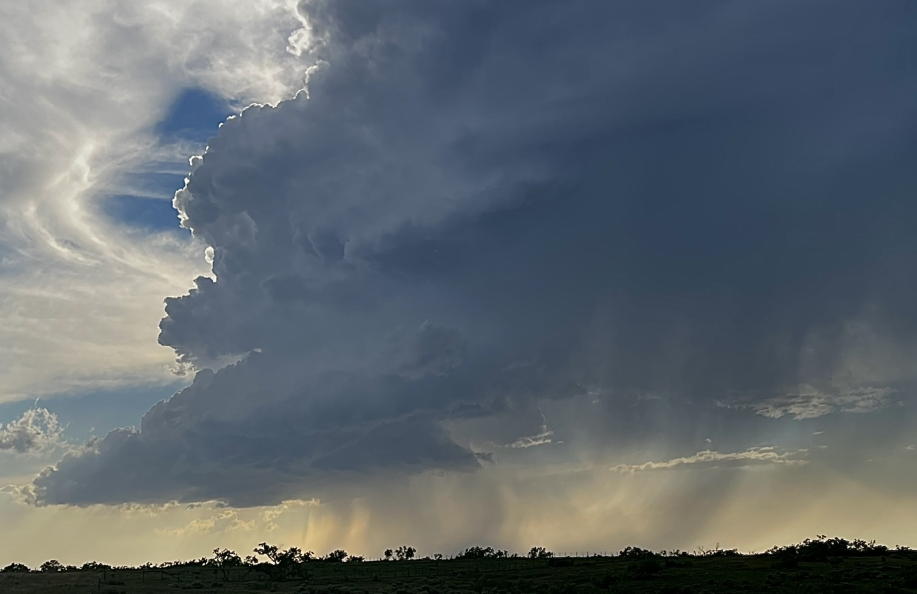Convective versus Stratiform Rain Events and Drought
Sep 15, 2023
The improvement of drought is not a linear path, and there is no straightforward solution to the multi-year precipitation deficit. Though, some rain events can help alleviate dry conditions better than others. We will be discussing two types of precipitation events, convective and stratiform rain events with what they are, and how they can impact drought conditions.
Above is an image of a convective rain event. Typically, convective rain events are localized, intense, and have short-durations, lasting minutes to a couple hours. Convective precipitation occurs in cumulonimbus clouds with larger drops and are associated with thunderstorms. These events can have heavy downpours, hail, and lightning, but are generally more sporadic and have less areal impact than stratiform events. Considering the land use, drought conditions can produce much larger amounts of runoff in an area, increasing potential for flash flooding due to the low infiltration of the soil. Convective events may provide localized relief; however, they will not make a significant impact over the general area being impacted by drought conditions. In addition, localized convective precipitation falling in an area largely impacted by drought will quickly descend back into drought as the surface water will soak into the ground and or the dry air coming from surrounding areas are likely to cause higher-than-average evaporation.
On the other hand, stratiform rain events are characterized by more widespread rain events that occur typically with largescale ascent or upward motion in the area, or frontal systems with steady rain bands and last hours or even days. They occur in nimbostratus clouds, and usually have smaller drops. These events produce a smaller amount of precipitation over a large area with less runoff and more of that precipitation can infiltrate into that ground during times of drought. This can replenish soil moisture and groundwater levels to drought-affected regions. With cloud cover over the area, this can also limit the amount of evaporation directly after a rain event and can enhance plant growth by reviving vegetation by supplying moisture to dry areas.
In short, although convective rain events can bring an area a large amount of precipitation to a localized area, stratiform rain events are more likely to improve drought conditions by increasing the amount of moisture in the soil and plants over a large area with less runoff.
